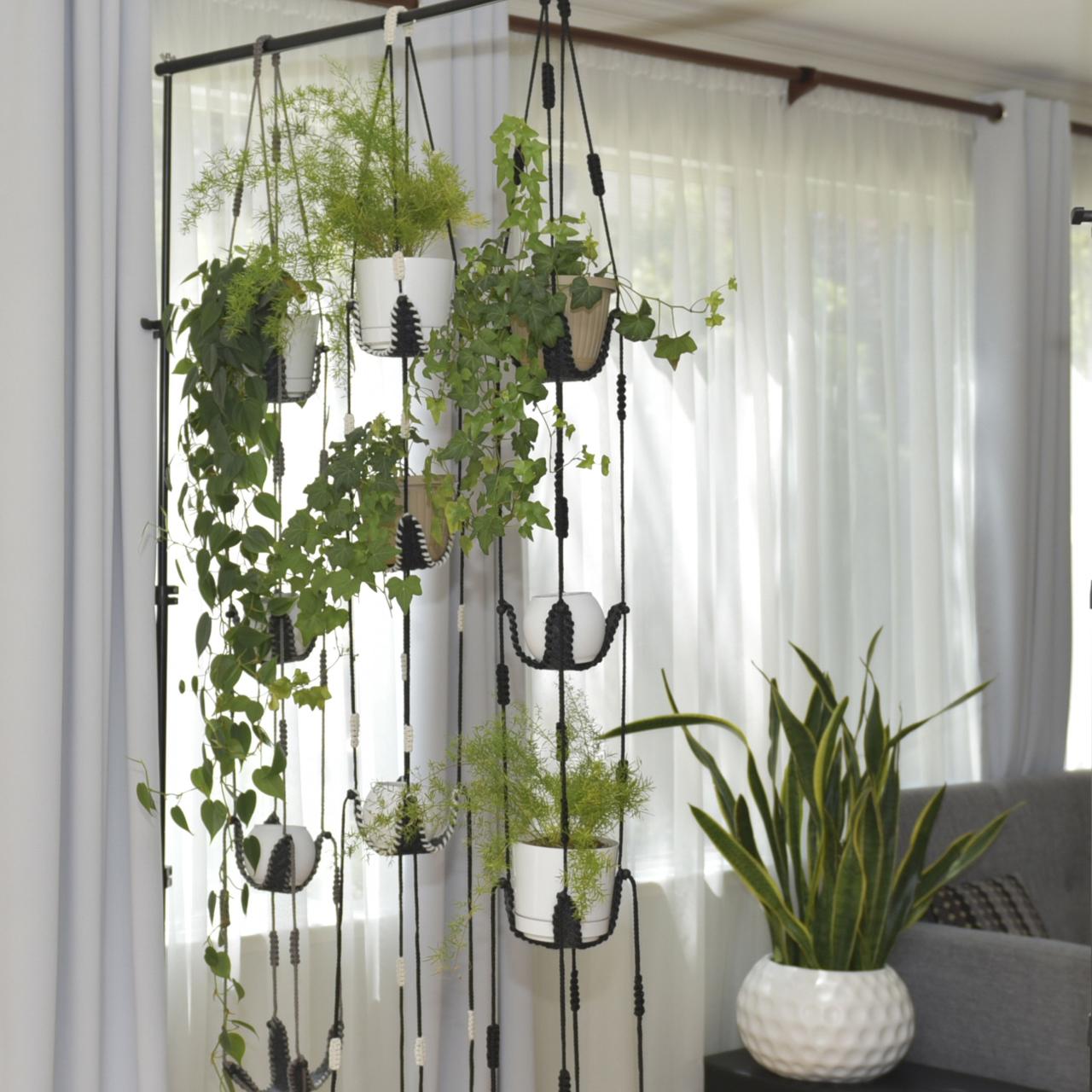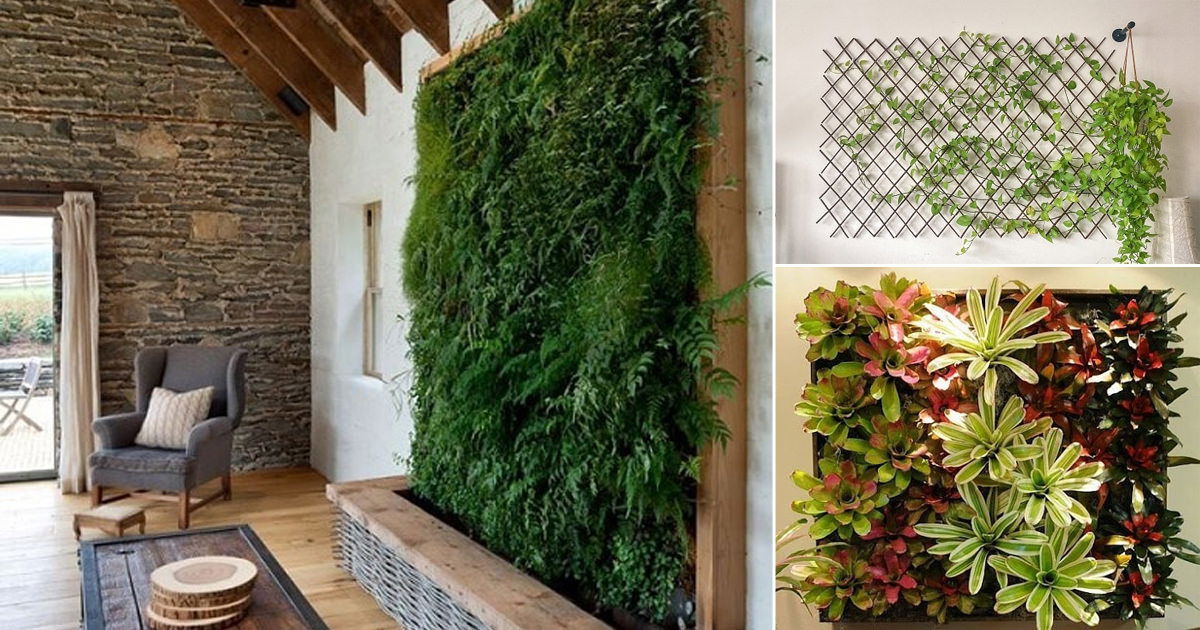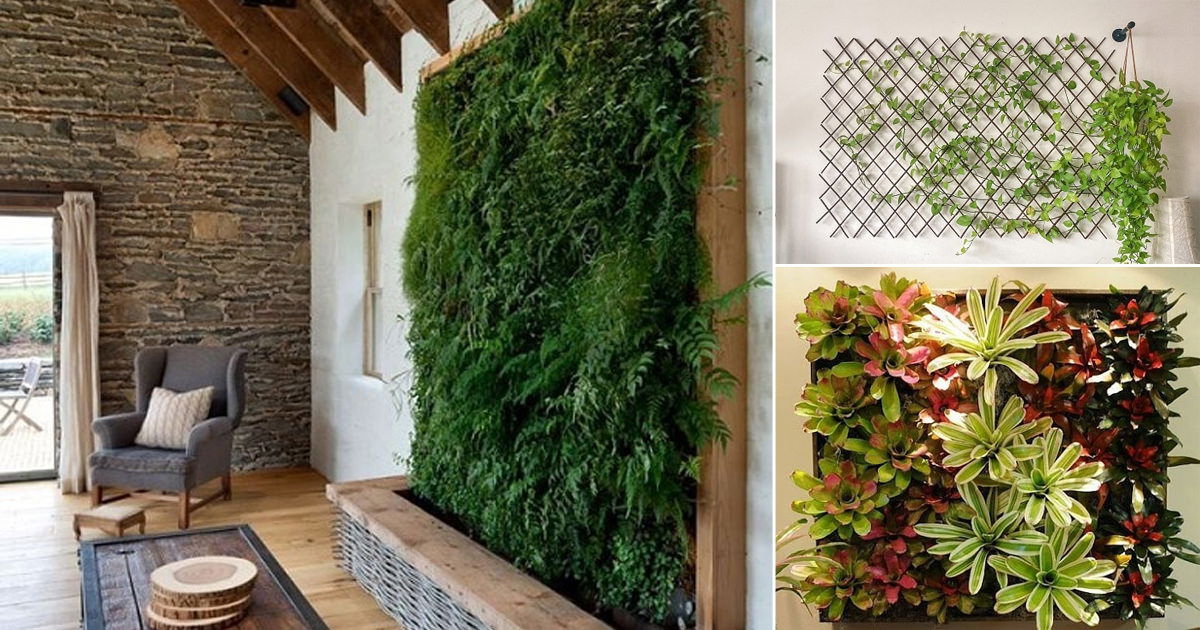The Best Plants for Vertical Hanging Displays are not only visually stunning but also incredibly practical. Vertical gardens and hanging planters offer a unique way to bring life and vibrancy to any space, whether it’s a cozy apartment, a bustling office, or a serene outdoor patio.
These vertical displays maximize space, add a touch of natural beauty, and can even improve air quality. From low-maintenance options like pothos and spider plants to more dramatic choices like English ivy and Boston ferns, there’s a perfect plant for every style and environment.
Introduction

Vertical hanging displays have gained immense popularity in recent years, transforming the way we decorate our homes and gardens. These displays offer a unique and stylish way to showcase plants, adding a touch of greenery and vibrancy to any space.
Vertical hanging displays offer numerous benefits, making them a popular choice for both indoor and outdoor spaces. Beyond aesthetics, they serve a practical purpose by maximizing space utilization, especially in smaller areas. By utilizing vertical space, these displays allow for a greater density of plants, creating a lush and verdant environment without sacrificing valuable floor space.
Vertical hanging displays offer a unique way to bring greenery indoors, especially in spaces with limited floor space. When choosing plants for these displays, it’s important to consider their light requirements, as many indoor spaces don’t receive a lot of direct sunlight.
Fortunately, there are many beautiful indoor hanging plants that thrive in low-light conditions, like those listed in this comprehensive guide. These low-maintenance options, such as pothos, spider plants, and peace lilies, can add a touch of nature to any vertical display, transforming it into a lush and inviting feature.
Space Maximization and Visual Appeal
Vertical hanging displays are particularly advantageous for individuals with limited space, allowing them to create a lush and vibrant environment without sacrificing valuable floor space. They are an excellent solution for small apartments, balconies, or even limited garden areas, allowing you to cultivate a variety of plants in a compact and visually appealing way.
Factors to Consider When Choosing Plants
Selecting the right plants for a vertical hanging display is crucial for its success and visual appeal. You need to consider several factors to ensure your chosen plants thrive and enhance your space.
Light Requirements
The amount of light your plants receive is essential for their growth and health. Vertical hanging displays are often placed in various locations, each with different light conditions. Consider the following:
- Shade-tolerant plants:These plants can thrive in low-light conditions, making them ideal for indoor displays or areas with limited sunlight. Examples include ferns, pothos, and peace lilies.
- Sun-loving plants:These plants need at least 6 hours of direct sunlight daily. They are suitable for outdoor displays or well-lit indoor spaces. Examples include succulents, herbs like rosemary and basil, and flowering plants like geraniums.
- Low-light plants:These plants can tolerate low-light conditions but may benefit from occasional exposure to brighter light. Examples include snake plants, ZZ plants, and spider plants.
Water Needs
Watering requirements vary significantly among plants. Understanding the water needs of your chosen plants is essential for their survival and well-being.
- Drought-tolerant plants:These plants can withstand periods of dryness and require infrequent watering. Examples include succulents, cacti, and certain types of herbs.
- Water-loving plants:These plants need consistent moisture and may require frequent watering, especially during hot weather. Examples include ferns, philodendrons, and peace lilies.
- Average watering requirements:These plants need regular watering, typically every 1-2 weeks, depending on the environment. Examples include spider plants, pothos, and snake plants.
Size and Growth Habits, The Best Plants for Vertical Hanging Displays
The size and growth habits of your chosen plants are crucial factors to consider when creating a vertical hanging display.
When selecting plants for vertical hanging displays, consider their tolerance for various weather conditions. Some species, like trailing succulents, thrive in dry climates, while others, like ferns, prefer humidity. For optimal growth and longevity, learn how to protect your hanging plants from harsh weather.
By choosing plants that suit your local climate and providing appropriate care, you can create a stunning vertical garden that adds beauty and greenery to any space.
- Trailing plants:These plants have long, cascading stems that drape beautifully over the edges of containers. Examples include pothos, spider plants, and trailing begonias.
- Cascading plants:These plants have a more upright growth habit but produce long, cascading stems that add visual interest. Examples include ferns, philodendrons, and ivy.
- Compact varieties:These plants have a more compact growth habit, making them ideal for smaller vertical displays or spaces with limited height. Examples include succulents, herbs, and certain types of flowering plants.
Best Plants for Vertical Hanging Displays

Vertical hanging displays offer a unique and space-saving way to add greenery to your home or office. They allow you to create a lush, cascading effect while maximizing vertical space. Choosing the right plants for these displays is crucial for their success and aesthetic appeal.
Here are some of the best plants known for their trailing growth, easy care, and suitability for hanging baskets:
Best Plants for Vertical Hanging Displays
The following table showcases some of the best plants for vertical hanging displays, along with their light requirements and watering needs:
Plant Name |
Description |
Light Requirements |
Water Needs |
|---|---|---|---|
Pothos (Epipremnum aureum) |
Easy to care for, trailing foliage, comes in various colors. |
Low to medium light. |
Allow soil to dry slightly between waterings. |
Spider Plant (Chlorophytum comosum) |
Produces spiderettes, easy to propagate, air-purifying. |
Medium to bright indirect light. |
Water when the top inch of soil is dry. |
String of Pearls (Senecio rowleyanus) |
Unique cascading foliage, delicate and charming. |
Bright indirect light. |
Allow soil to dry completely between waterings. |
English Ivy (Hedera helix) |
Classic trailing vine, grows quickly, can tolerate low light. |
Low to medium light. |
Water when the top inch of soil is dry. |
Philodendron (various species) |
Large variety of leaf shapes and colors, easy to care for. |
Medium to bright indirect light. |
Water when the top inch of soil is dry. |
Boston Fern (Nephrolepis exaltata) |
Classic fern with delicate fronds, prefers humidity. |
Bright indirect light. |
Keep soil consistently moist. |
Tradescantia (various species) |
Colorful foliage, easy to propagate, trailing growth. |
Medium to bright indirect light. |
Water when the top inch of soil is dry. |
Swedish Ivy (Plectranthus verticillatus) |
Fast-growing, trailing foliage, can tolerate low light. |
Low to medium light. |
Water when the top inch of soil is dry. |
Tips for Creating Vertical Hanging Displays: The Best Plants For Vertical Hanging Displays
Creating a vertical hanging display is a great way to add greenery and visual interest to any space. To achieve a successful and thriving display, consider these tips.
Selecting the Right Container
The choice of container plays a crucial role in the success of your vertical hanging display.
- Materials:Choose containers made from materials that are durable, lightweight, and suitable for plant growth. Plastic, metal, or terracotta pots are popular options. Plastic is generally the most lightweight, while terracotta allows for better air circulation and drainage. Metal containers can add a modern aesthetic.
- Size:The size of the container should be appropriate for the size of the plants you intend to grow. Consider the mature size of the plants and allow for adequate space for root growth.
- Drainage Holes:Ensure that the container has drainage holes to prevent waterlogging and root rot. If the container lacks drainage holes, create them yourself using a drill or a sharp object.
Using the Right Potting Mix
A well-draining potting mix is essential for healthy plant growth in vertical hanging displays.
- Drainage and Aeration:The potting mix should allow for good drainage and aeration. Avoid using heavy clay-based mixes that can retain too much moisture.
- Moisture Retention:The mix should also retain some moisture to keep the plants hydrated. A good potting mix will strike a balance between drainage and moisture retention.
- Nutrient Content:Choose a potting mix that contains the necessary nutrients for plant growth. You may want to consider a mix specifically formulated for hanging baskets or vertical gardens.
Creating a Balanced Display
A balanced display considers the interplay of textures, colors, and plant heights.
- Varying Textures:Incorporate plants with different textures, such as smooth leaves, fuzzy leaves, or spiky foliage. This adds visual interest and depth to the display.
- Color Contrast:Choose plants with contrasting colors to create a vibrant and eye-catching display. Consider using plants with foliage in various shades of green, purple, or variegated patterns.
- Plant Heights:Use a combination of trailing plants, cascading plants, and upright plants to create a balanced display with visual interest.
Proper Maintenance
Regular maintenance is crucial for keeping your vertical hanging display healthy and thriving.
- Watering:Water your plants regularly, ensuring the potting mix is consistently moist but not soggy. The frequency of watering will depend on the plant species, container size, and environmental conditions.
- Fertilizing:Use a balanced liquid fertilizer diluted to half strength every two weeks during the growing season. This provides the plants with the necessary nutrients for healthy growth.
- Pruning:Prune your plants regularly to maintain their shape and encourage bushier growth. Remove any dead or damaged leaves or stems.
Final Wrap-Up
Creating a vertical hanging display is a rewarding experience that allows you to express your creativity and connect with nature. By carefully selecting plants, containers, and placement, you can transform any space into a verdant oasis that brings joy and tranquility.
So, explore the world of vertical gardening, and discover the perfect plants to elevate your home or garden.
General Inquiries
What are the best materials for vertical hanging planters?
Popular materials for vertical hanging planters include metal, plastic, wood, and even recycled materials. Choose a material that complements your decor and provides adequate drainage.
How often should I fertilize my hanging plants?
Fertilize your hanging plants every 2-4 weeks during the growing season with a balanced liquid fertilizer diluted to half strength. Avoid over-fertilizing, which can harm the roots.
What are some unique ideas for vertical hanging displays?
Get creative with vertical hanging displays! Try using repurposed materials like old ladders, crates, or even pallet walls. You can also create a living wall using a variety of plants and textures.
